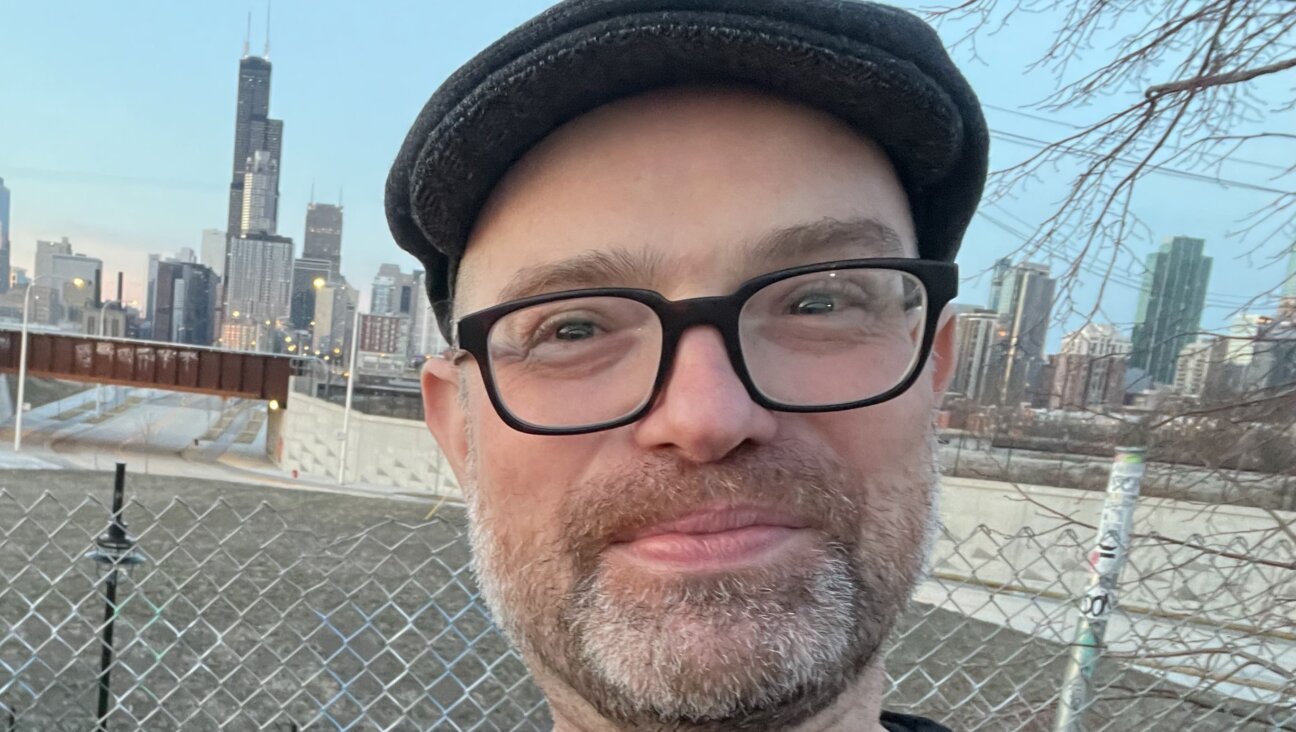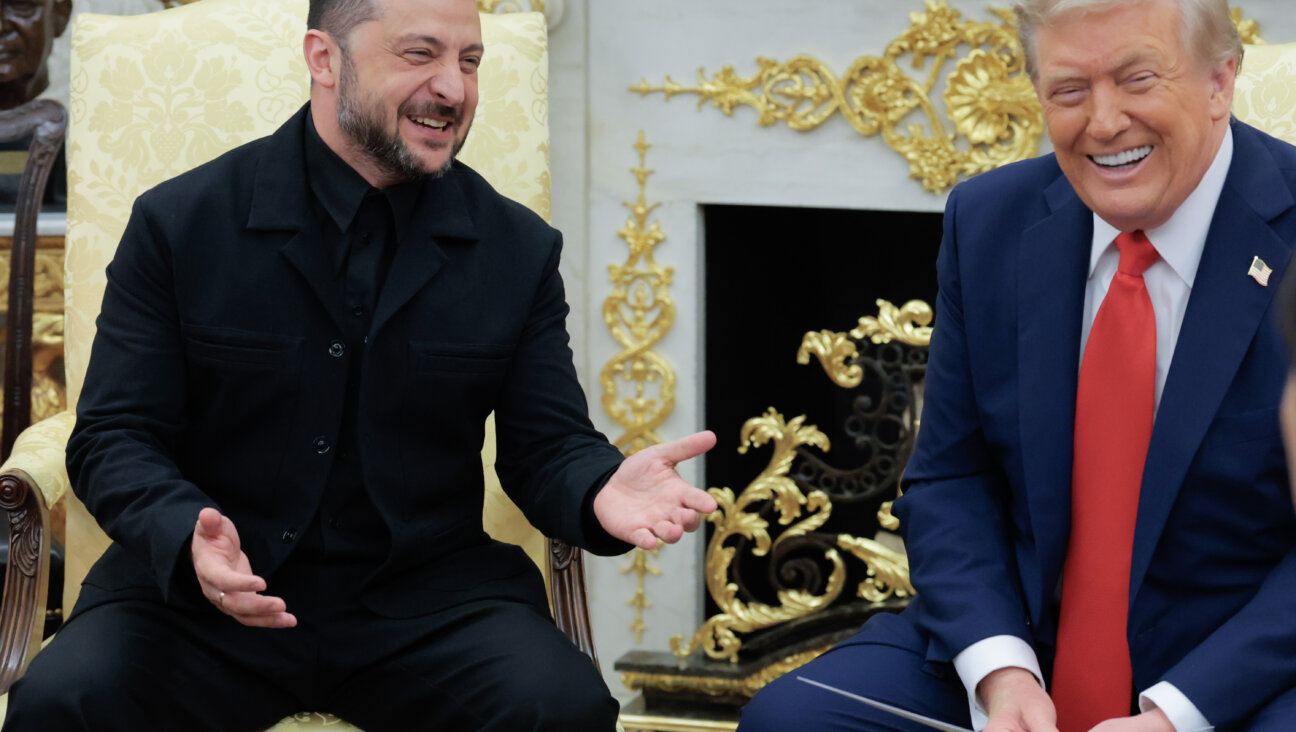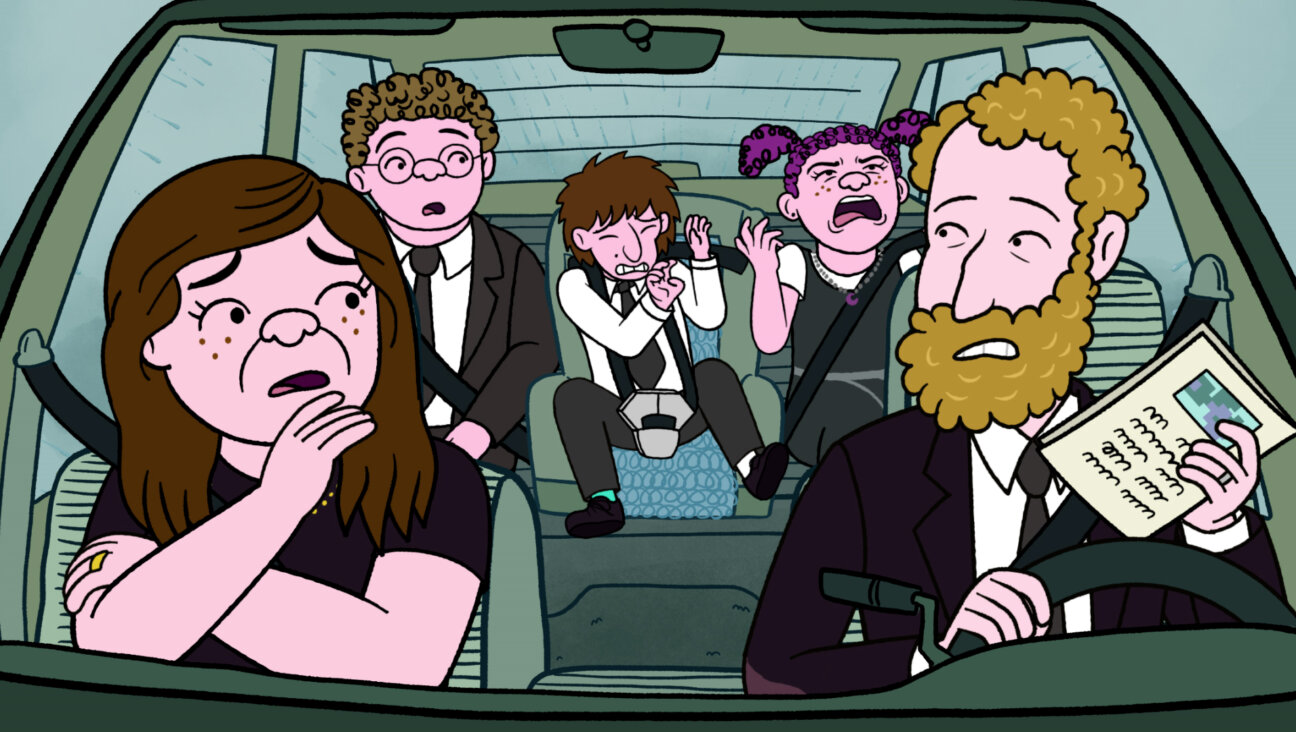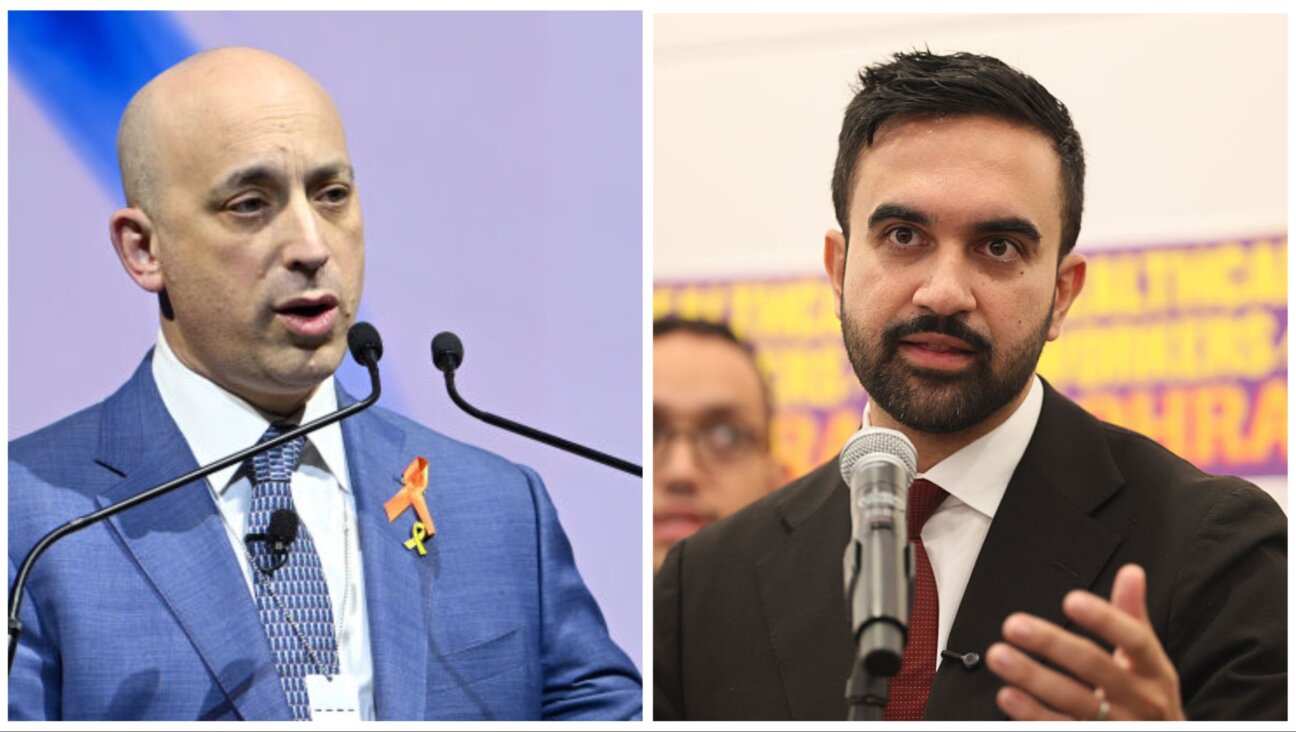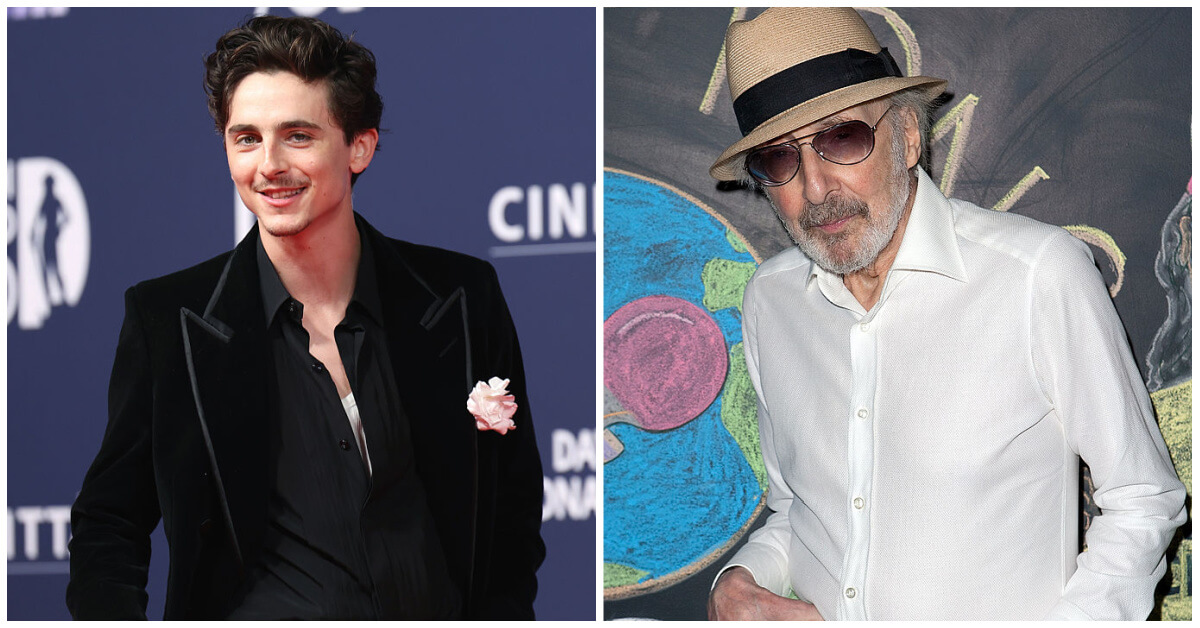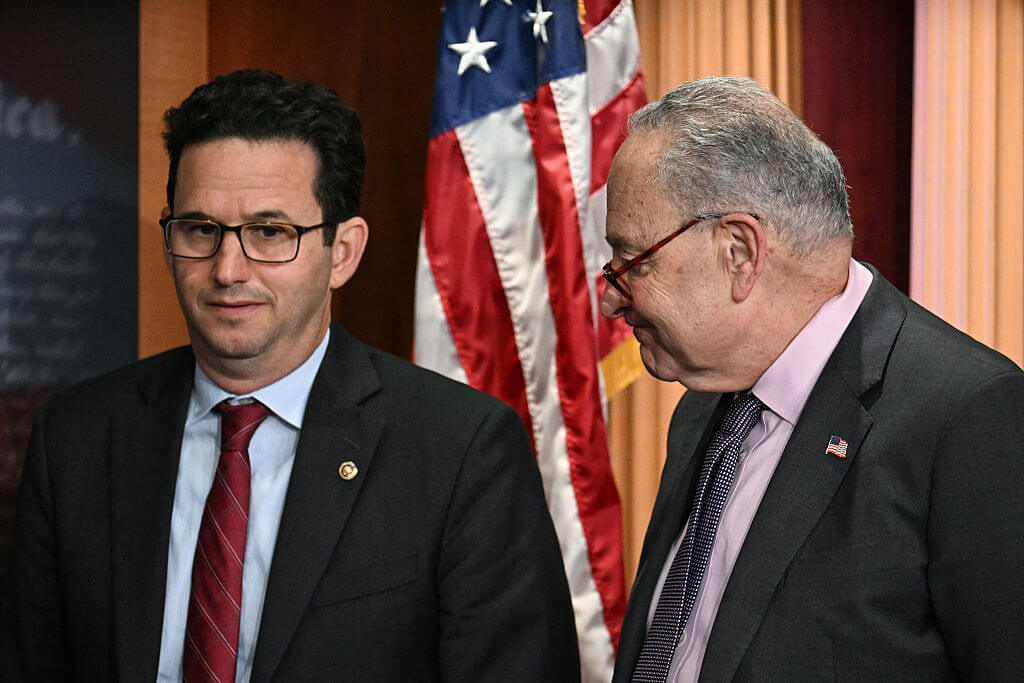He created the most Jewish of superheroes — but how Jewish was he really?
Born 100 years ago to immigrants from Romania, Stan Lee went on to become one of the most influential artists of the 20th century
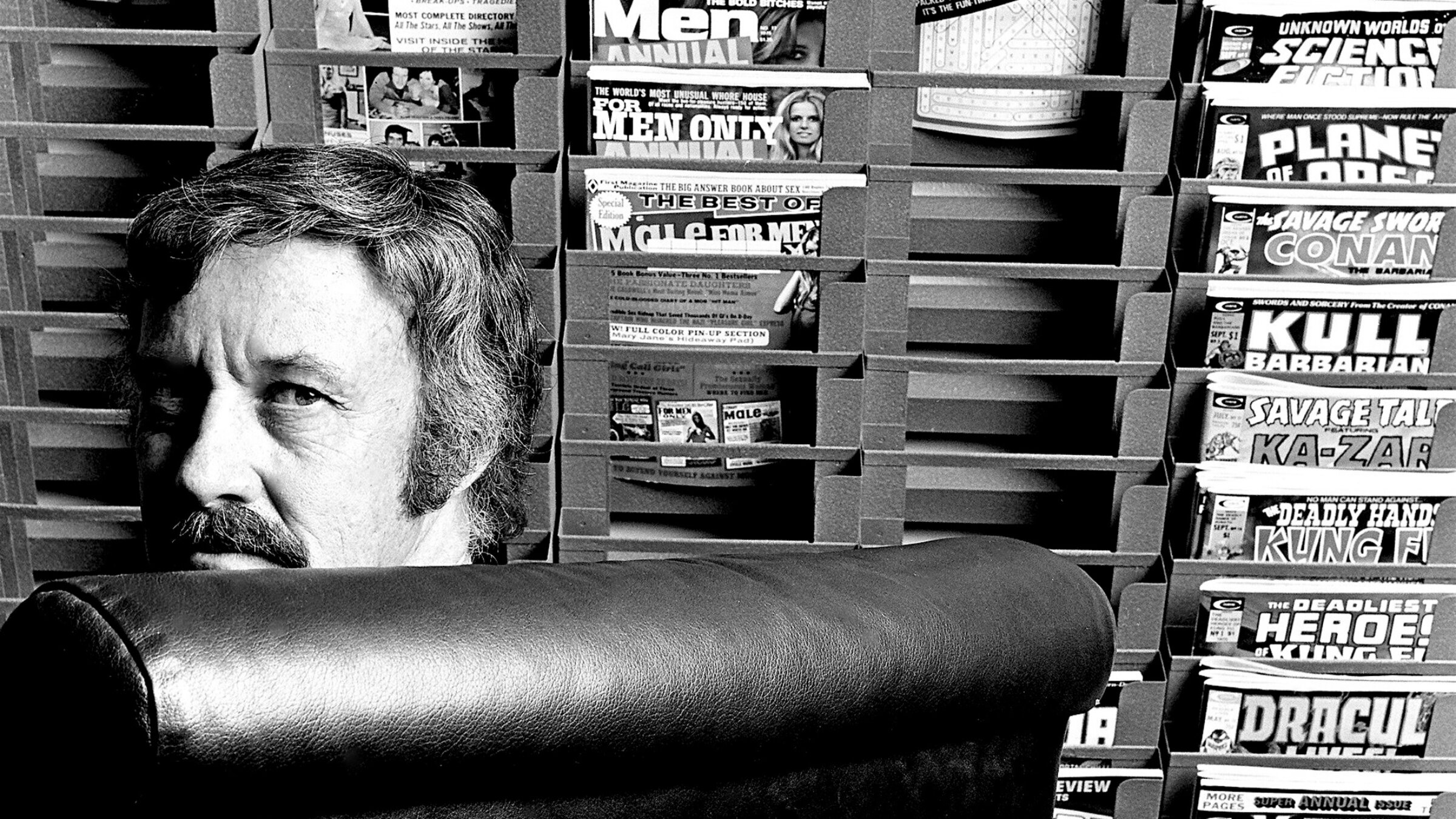
Stan Lee in his office, 1975. Photo by Getty Images
Stan Lee, co-creator of the Marvel Universe, including dozens of superheroes from Spider-Man to the Hulk, would have turned 100 Dec. 28.
The most famous comic book creator in the world, a founding father and a fixture of American popular culture, Lee, who died in 2018, at age 95, was born in 1922 as Stanley Martin Lieber, to Jewish immigrants from Romania. Lee was Jewish, and indisputably an icon, but is he a Jewish icon?
In the beginning
Lee was born on New York’s Upper West Side to Jack and Celia Lieber (né Iancu Urn Leibovici and Celia Solomon), whose families both fled Eastern Romania. Jack was a factory dress-cutter but only sporadically employed following the Depression, and the Liebers moved around lower working-class immigrant neighborhoods in Washington Heights and the Bronx.
Celia lit Shabbat candles and Jack attended shul with some regularity. Stan read the Bible but didn’t go to Hebrew school. He wanted to be “all-American,” and only had a bar mitzah because his father insisted.
He attended DeWitt Clinton High School in the Bronx, with fellow Jewish classmates Robert Kahn and Milton Finger — later known as Bob Kane and Bill Finger, creators of Batman.
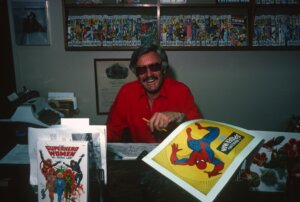
Lee graduated at age 16, in 1939, the same time his cousin Jean’s husband, Martin (Moe) Goodman, a self-made pulp magazine publisher, got into the new fad of superheroes (started by Superman in June 1938) with an imprint called Timely Comics. Goodman staffed his business with relatives, common if not customary then, and working there seemed like as good a job as any for a high school graduate in the Depression.
He started out as an office assistant to Timely’s 26-year-old writer/editor Joe Simon (Hymie Simon) and 22-year-old artist/art director Jack Kirby (Jacob Kurtzberg), who soon created the company’s biggest hit, Captain America. When he got his first writing assignment, a two-page prose story in May 1941’s Captain America Comics #3, he used the pen name Stan Lee. He saved his real name, he later explained, for his career as a novelist.
In late 1941 Simon and Kirby left Timely following a dispute with Goodman. Which made Lee, at the stately age of 19, the temporary editor, a role he would hold for 31 years; in 1972, Lee would succeed Goodman as publisher.
After the war, superheroes fell out of favor (the reason also involves Jews, but that’s a topic for another time), and were replaced with fad genres like horror, western, romance and giant monsters. Timely, now generally going by Atlas, didn’t have the same success. Eventually, Goodman had Lee fire most of the staff, leaving him as “a human pilot light” in charge of freelancers.
The Marvel Revolution
In 1960 Lee reinvented himself, which is probably the most Jewish thing one can do in America.
As he told it, he found the comics they were publishing juvenile and banal. He was planning on changing careers, when Goodman asked him to try superheroes again. Lee’s wife, Joan, suggested that, since he had nothing to lose, he should try writing them the way he’d always wanted to.
So he reached out to Jack Kirby, who’d been freelancing for his former assistant for the past couple of years, and whom Lee considered the best artist in the business, and in November 1961 they introduced The Fantastic Four. Then in 1962, the Hulk, Thor and Ant-Man. In 1963, Iron Man, the Avengers and the X-Men. In 1966, Silver Surfer and Black Panther. And hundreds of other heroes, villains, cast and concepts.
Lee also co-created Spider-Man in 1962 and Doctor Strange in 1963 with Steve Ditko, and Daredevil in 1964 with Bill Everett.
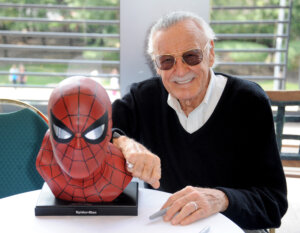
More than just new characters, Lee and these artists created a whole new approach to the genre. Their stories had greater realism, naturalistic dialogue (well, closer anyway) and deeper characters with relatable personalities and faults, what Lee liked to call “heroes with feet of clay.” It might seem banal today, just an incremental development, but it was nothing short of revolutionary. These were superheroes who were everything superheroes weren’t supposed to be.
Just as important, Marvel Comics, as the company was now known, offered a cohesive fantasy world in which all its characters lived, met, fought, teamed up and even dated. DC characters, like Superman and Batman, did occupy the same world and occasionally cross paths, but these were either special events or standalone team series, safely siloed from the respective characters’ ongoing storylines. With Marvel, what happened in one comic would affect another. Lee and his artists created a world that mattered, and that made all the difference.
Though he created nothing alone, as the architect of the Marvel Universe, Lee had an impact on modern culture that made him one of the most influential writers of the 20th century.
What allowed Lee to oversee as well as almost singlehandedly write all these comics was the Marvel Method. He provided the gist, usually in a couple of written paragraphs or short conversation; the artist told the story as they saw fit, including plot points, panels and layouts, action choreography, and so on. Lee added the dialogue at the end.
But for all its merits, this method led to conflicts with many artists, who felt uncredited and underpaid, and to lasting controversy over Lee’s exact contributions to the characters and stories. When Kirby decamped to DC Comics in 1970, he got his revenge in fiction, creating an obvious Lee pastiche named Funky Flashman — an insulting name that also sounded Jewish.
Jewish superheroes?
Lee didn’t just make superheroes more human, he also made them more Jewish.
His stories had the flavor of Yiddish theater plays, melodramas spiced with cynicism and an irreverent, self-deprecating, sometimes fatalistic humor. His characters didn’t live in Metropolis or Gotham but New York, the city with the largest Jewish population in the world (his signature signoff “Excelsior!” is the state motto of New York).
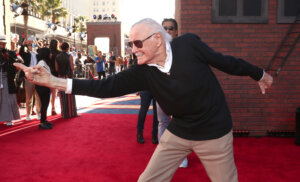
None of these superheroes were explicitly Jewish, but they sure acted and sounded like it. They were alienated (Thing, Namor, Hulk, Silver Surfer), scapegoated (Spider-Man), persecuted (X-Men), traumatized (post-World War II Captain America), guilt-ridden (Spider-Man, Captain America), riddled with self-loathing (Thing, Spider-Man, X-Men, Hulk). They bickered (Fantastic Four, Avengers, X-Men), and they were snarky (pretty much all of them). They were antithetical to superheroes as paragons of WASPy virtue and nobility but part and parcel of Jewish American life.
As often as not, they saw their superpowers as a burden rather than a gift, a power they never asked for that came with a responsibility they never wanted, placing them in the tradition of the Hebrew prophets, like Abraham and Moses and David, ordinary (and often ornery) people who, when presented with a higher calling, ultimately did the right thing.
It’s easy to read too much into these things, but it’s hard to ignore all the Yiddishkeit.
How Jewish were they?
Some of Lee’s creations read as more Jewish than others, like the X-Men, a persecuted racial minority of “mutants” who can largely pass for human, sworn to protect a world that hates them. Or the Hulk, who Lee acknowledged was essentially a golem. But the one most often pointed to is Spider-Man, Marvel’s flagship character.
Peter Parker might as well be a Philip Roth character. He was a brainy, anxious neurotic (Lee specifically described him as “nebbishy”), in a way Clark Kent only pretended to be, and becoming a superhero did little to change that, or his misfortunes.
He’s from Forest Hills, Queens, a heavily Jewish neighborhood, who constantly wisecracks Mad magazine-style (a sense of humor that, with a couple of exceptions, has been oddly missing from all eight Spider-Man films), is obsessively demonized in the press, and since he needs tall buildings to climb and swing from, his powers are practically useless outside New York City — talk about Jewish metaphor.
Lee kept it at that, but subsequent writers have sprinkled Yiddish in his dialogue, like kibitzer, tuchas, schmuck, farkakte, meshugas, shmendrick and so many Oys it’s practically his catchphrase, along with references to Hanukkah and Shavuos.
How Jewish was he?
Lee never hid or disavowed his Jewishness, but his Jewish identity was nominal. He wasn’t observant in any way, and his wife for nearly 70 years, Joan, was a British Episcopalian. Their daughter, JC (Joan Celia), was baptized.
When asked what it meant for him to be Jewish, he said, “It means that you come from Jewish parents, obviously, and you have a long heritage behind you.” In another interview he added, “To me you can wrap all of Judaism up in one sentence, and that is, ‘do not do onto others.’” Whether he was aware of it or not, he was quoting the Talmud and the most famous adage of Hillel the Elder, actually meant as a summary of Jewish moral law as brotherly love.
When asked if he believed in God, he answered, “I’m not going to try to be clever. I really don’t know. I just don’t know.”
Later years
In 1981 Lee stepped down as publisher and moved to Los Angeles to head Marvel Productions, an animation studio later purchased, along with Marvel Comics, by New World Entertainment.
Things didn’t work out as he’d hoped, and he spent the next chapter of his career trying to make inroads in Hollywood. These efforts ranged from ambitious, like the sci-fi reimagining Romeo and Juliet: The War (a graphic novel meant as proof-of-concept for a high-budget movie, which never materialized), to Pamela Anderson’s Stripperella.
Highly touted ventures like Stan Lee Media and POW Entertainment, mostly designed to cash in on his name, lost millions and led to securities fraud convictions for some of his business partners. It was embarrassing and sad, but it was hard to resent Lee, ever ebullient, always seeming to have the time of his life.
And with the immense success of the Marvel movies, and Lee’s Hitchcock-like cameos in them cementing him as a recognizable figure worldwide, he ended his almost 80-year career on a high note.
When Lee passed away on Nov. 12, 2018, the Forward’s Andrew Paul called it “the end of an era not only for American pop culture, but for modern Jews’ influence upon it.”
Perhaps fitting, Lee’s final published work was the introduction to the book We Spoke Out: Comic Books and the Holocaust.
Lee’s legacy
Black Panther: Wakanda Forever is the 29th movie in the Marvel Cinematic Universe, which in 14 short years has made over $28 billion. It’s the biggest and most profitable movie franchise in history, by far.
That’s just box office. Marvel was bought by Disney in 2009, and it’s a prime mover of their retail sales, which in 2021 totaled $67.4 billion. The comic books are also doing well. Marvel leads the industry with 2021 sales of roughly $660 million.
And at the genesis of it all is Stan Lee, whose co-creations are the biggest intellectual property in history. The stories he and his artists told are some of the most beloved, and many of them, particularly those from 1961 to 1970 and especially those made with Jack Kirby, are works of Jewish literature and art (comics are both, take your pick) that reflect the Jewish American experience of their time, even if through metaphor and hyperbole.
Lee, or Lieber, isn’t named to any “Jewish 100” list and isn’t in the Jewish American Hall of Fame. But should he be regarded as a Jewish icon? Yes. Though it’s something he might not have wanted to be.
May his memory be a blessing.

